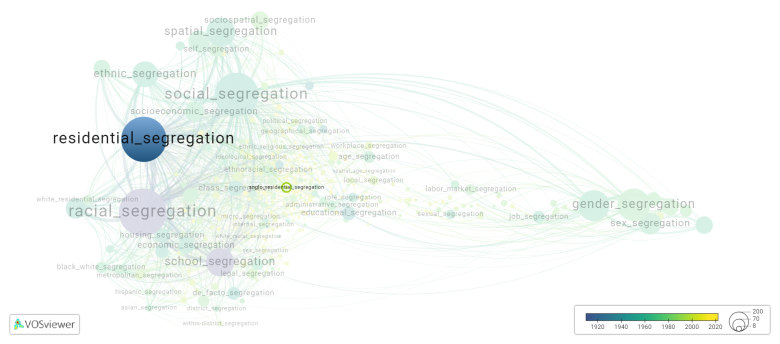Anglo residential segregation: Difference between revisions
(Creating page) |
(Creating page) |
||
| Line 8: | Line 8: | ||
Anglo residential segregation can lead to disparities in access to quality schools, healthcare, and other resources for different racial and ethnic groups. It can also perpetuate inequalities and hinder social integration and cohesion. Efforts to address and combat Anglo residential segregation include policies promoting fair housing practices, affordable housing initiatives, and community development programs that promote diversity and inclusion. | Anglo residential segregation can lead to disparities in access to quality schools, healthcare, and other resources for different racial and ethnic groups. It can also perpetuate inequalities and hinder social integration and cohesion. Efforts to address and combat Anglo residential segregation include policies promoting fair housing practices, affordable housing initiatives, and community development programs that promote diversity and inclusion. | ||
==See also== | ==See also== | ||
==Related segregation forms== | |||
Anglo residential segregation is frequently discussed in the literature with the following segregation forms: | |||
[[residential segregation]] | |||
[[File:anglo_residential_segregation.png|780x780px]] | |||
For the complete network of associated segregation forms, see: | |||
year of publication https://tinyurl.com/2235lkhw | |||
Louvain clusters https://tinyurl.com/2d8wg5n3 | |||
betweenness centrality https://tinyurl.com/223udk5r | |||
disciplines where segregation forms first appeared https://tinyurl.com/244d8unz | |||
==References== | ==References== | ||
==Notes== | ==Notes== | ||
Revision as of 14:33, 27 September 2024
Date and country of first publication[1]
2006
United States
Definition
Anglo residential segregation refers to the pattern of Anglo, or white, individuals living in separate neighborhoods or communities from people of other racial and ethnic backgrounds. This type of segregation is often the result of historical discriminatory housing practices and policies, such as redlining and restrictive covenants, which prevented people of color from buying or renting homes in certain areas.
Anglo residential segregation can lead to disparities in access to quality schools, healthcare, and other resources for different racial and ethnic groups. It can also perpetuate inequalities and hinder social integration and cohesion. Efforts to address and combat Anglo residential segregation include policies promoting fair housing practices, affordable housing initiatives, and community development programs that promote diversity and inclusion.
See also
Related segregation forms
Anglo residential segregation is frequently discussed in the literature with the following segregation forms:
For the complete network of associated segregation forms, see:
year of publication https://tinyurl.com/2235lkhw
Louvain clusters https://tinyurl.com/2d8wg5n3
betweenness centrality https://tinyurl.com/223udk5r
disciplines where segregation forms first appeared https://tinyurl.com/244d8unz
References
Notes
- ↑ Date and country of first publication as informed by the Scopus database (December 2023).
At its current state, this definition has been generated by a Large Language Model (LLM) so far without review by an independent researcher or a member of the curating team of segregation experts that keep the Segregation Wiki online. While we strive for accuracy, we cannot guarantee its reliability, completeness and timeliness. Please use this content with caution and verify information as needed. Also, feel free to improve on the definition as you see fit, including the use of references and other informational resources. We value your input in enhancing the quality and accuracy of the definitions of segregation forms collectively offered in the Segregation Wiki ©.
Anglo residential segregation appears in the following literature
Crowder K., Chavez E., South S.J. (2006). Wealth, race, and inter neighborhood migration. American Sociological Review, 71(1), 72-94. American Sociological Association.https://doi.org/10.1177/000312240607100104

